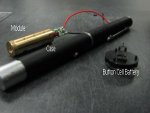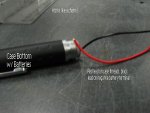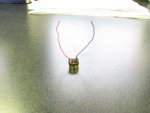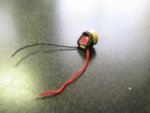I just ordered some modules for a product my company is developing. The only way I can get the modules to work is to jerry rig the ground wire on the module into the grounded case of another laser pointer pen.
How do I go about grounding the wire in a small working area? i.e. as small a space as possible so I can just connect the leads to a battery.
Using Instapark 532 nm 5mW Laser Module.
How do I go about grounding the wire in a small working area? i.e. as small a space as possible so I can just connect the leads to a battery.
Using Instapark 532 nm 5mW Laser Module.
Last edited:










